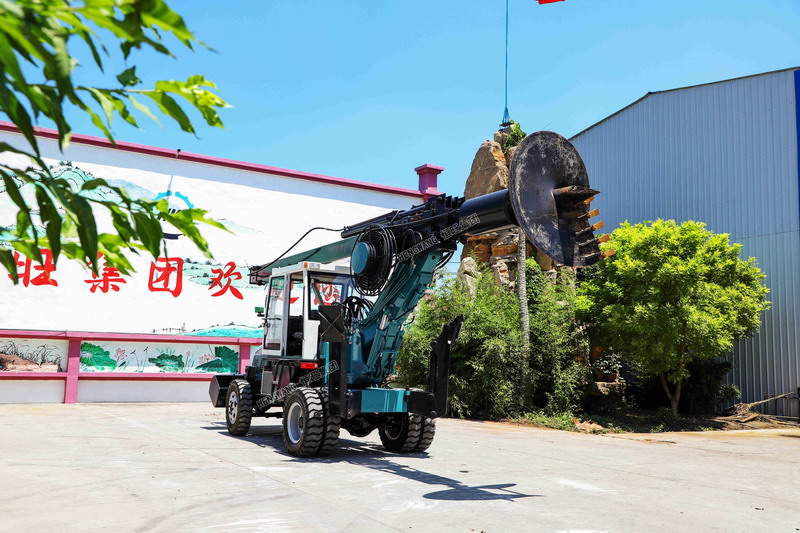Date: Apr 27, 2024 Views:
Since the current types of rotary drilling rigs and drill bits are different, and the geology that can be drilled is also different, what kind of geology is rotary drilling suitable for?

What geology is the rotary drill suitable for?
1. Soft soil and other easily collapsed strata:
1. Characteristics and pore-forming risk of easily collapsible strata such as soft soil
In soft soil, newly deposited backfill soil and newly deposited loose fine sandy soil layer, if the groundwater level is high, after the rotary drilling rig excavates the soil, even if the drilling is in the case of a mud wall protection, the hole wall is still very weak. It is difficult to maintain stability, and it is easy to cause collapse or necking.
2. Construction method of rotary drilling
In soft soil, newly backfilled soil and other water-bearing strata that cannot be effectively protected by mud, the most efficient and safe method of rotary drilling is to take measures to protect the wall. Each rotary drilling rig is equipped with 3 left and right steel casings, 1 vibrating hammer and 1 crane with sufficient pulling force according to the difficulty of drilling; the length of the steel casing can be lowered to the bottom of the soft layer, and the diameter of the steel casing should be appropriate. Greater than the pile diameter of about 100mm
2. Sand and silt layers:
1. Characteristics and risks of sand and silt strata
When drilling holes in fine sand or silt layers, if the groundwater level is high, mud should be used to form holes in the retaining wall. Due to the lack of adhesion between particles, this type of formation is easily washed away under the action of water flow.
2. Construction method of rotary drilling
When using mud retaining wall to construct in well-separated sand or silt stratum, the following measures should be considered:
(1) Appropriately reduce the lowering and pulling speed of the drill bit, reduce the flow rate of the mud between the drill bucket and the hole wall, and reduce scouring.
(2) Appropriately increase the outer skimming angle of the drill teeth. Increase the distance between the hole wall and the side wall of the drill bucket.
(3) Appropriately increase the water flow hole area in the drill bucket, reduce the negative pressure at the top and bottom during the pulling process of the drill bucket, and then reduce the flow rate of the mud in the hole.
(4) Configure high-quality mud wall protection, and measure the sand content of mud in the hole in time. Take effective measures in a timely manner when exceeding the standard.
(5) Check the tightness of the bottom cover of the drill bucket after closing. If it is found that the distortion causes a large gap, it should be repaired in time to avoid sand leakage.
3. Hard clay and mudstone strata
1. Characteristics and porosity risk of hard clay and mudstone strata
The biggest problem that hard clay brings to the drilling process is the difficulty of drilling and unloading. Compared with the Quaternary sedimentary strata, the typical characteristics of mudstone are higher strength, softening and high viscosity after contact with water, and easy to slip.
2. Construction method of rotary drilling
Drilling in hard clay should consider adopting a bulk drill bucket or opening the side of the bottom of the drill bucket to improve soil unloading efficiency. In mudstone strata, drilling bored piles can be made into holes by rotary excavation, and the following points can be started to improve the construction efficiency.